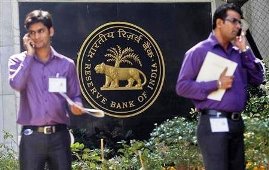 The falling gold and oil prices are likely to result in a significant reduction in the current account deficit, which in turn would provide the RBI with greater headroom for policy easing, experts have said.
The falling gold and oil prices are likely to result in a significant reduction in the current account deficit, which in turn would provide the RBI with greater headroom for policy easing, experts have said.
According to a RBS report, ‘the impact on India's current account deficit should be significant, cumulatively amounting to 1.9 per cent of GDP’ provided for the full year FY14 prices for both oil and gold remain at current levels and aggregate volume gold demand remains stable.
"Prima facie, the reduction in the current account deficit should provide the RBI with greater headroom for policy easing," the report said.
According to a Bank of America Merrill Lynch report, the downtrend in commodities is clearly good for the economy and eases the tail risks on the twin deficit to some extent.
A falling commodity price environment
In the last few days gold fell to Rs 26,350 per 10 grams, its lowest level since August 17, 2011.
Crude oil prices also tumbled in Asia with Brent falling below $100 a barrel.
"We have increased our expectation of a RBI rate cut this fiscal to 100 bps vs our earlier expectation of a 75 bps cuts following the decline in commodity prices globally," Bank of America Merrill Lynch report said.
RBI, in its mid-quarter monetary policy review on March 18, reduced the repo rate by 25 basis points from 7.75 to 7.50 per cent.
Repo rate is the rate at which banks borrow short-term funds from the central bank, while CRR is the portion of deposits that banks have to keep with it.
RBI lowered key policy rates to help revive growth. India's GDP growth in the third quarter of 2012-13 fiscal, ended March 31, was 4.5 per cent - weakest in 15 quarters.











 © 2025
© 2025